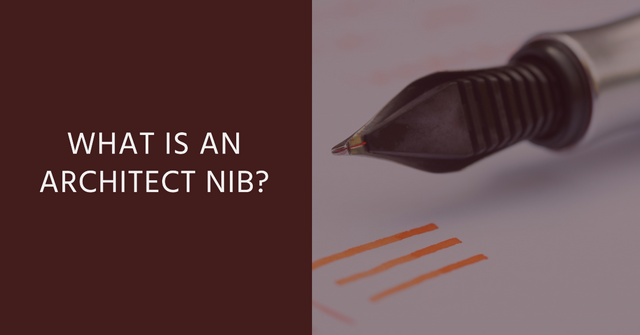Key Takeaways
- A stub nib is a unique type of fountain pen nib known for its broad and flat writing point.
- It creates line variation with thin horizontal strokes and wider vertical ones.
- Stub nibs have a flat tip and straight-cut tines, making them easier to write with than italic nibs.
- Writing with a stub nib enhances handwriting, adds flair to notes, and offers versatility for everyday writing.
- Techniques for writing with a stub nib include holding the pen at a 45-degree angle, maintaining the right writing angle, and applying consistent pressure.
- Common issues with a stub nib include scratchy writing and ink flow problems, which can be addressed through troubleshooting.
Understanding Stub Nibs
A stub nib is a unique type of fountain pen nib that is known for its broad and flat writing point.
This design allows it to produce line variation in handwriting, with thin horizontal strokes and wider vertical ones.
Originating from the art of calligraphy, stub nibs have found their place in everyday writing due to their ability to enhance even the simplest handwriting styles.
In the next sections, we will delve deeper into the anatomy of a stub nib, factors to consider when choosing one, and the benefits of writing with a stub nib.
The Anatomy of a Stub Nib
A stub nib is a unique piece of craftsmanship.
Unlike regular round-tipped nibs, a stub nib has a flat, broad writing point.
This design is what allows it to create the distinctive line variation that it's known for.
Here are the key features of a stub nib:
- Tip Shape: The tip of a stub nib is flat and broad, which contrasts with the rounded tips found on standard nibs. This flat tip is what creates the unique line variation in your writing.
- Tines: The tines of a stub nib are cut straight across, which differs from the angled cut found on italic nibs. This straight cut makes stub nibs more forgiving and easier to write with than their italic counterparts.
- Writing Point: The writing point of a stub nib is wider than that of a standard nib. This width varies depending on the size of the nib and can range from 1.1mm to 1.9mm.
To better understand how a stub nib differs from other types of nibs, you can refer to this comprehensive guide to fountain pen nibs.
Benefits of Writing with a Stub Nib
Writing with a stub nib offers a unique set of benefits that can enhance your handwriting and overall writing experience.
Here are some of the key advantages:
- Line Variation: The primary benefit of a stub nib is the line variation it provides. The broad vertical strokes and thin horizontal ones add a distinctive flair to your handwriting, making even the simplest notes look elegant and artistic.
- Handwriting Enhancement: If you're looking to improve or change your handwriting style, a stub nib can be a great tool. The line variation it offers can make your handwriting look more stylized and appealing.
- Versatility: Despite their origins in calligraphy, stub nibs are versatile enough for everyday writing. Whether you're jotting down notes, signing documents, or writing a letter, a stub nib can make the experience more enjoyable.
In the next part of this guide, we will delve into the practical aspects of writing with a stub nib, including writing techniques, and troubleshooting common issues.
Writing with a Stub Nib
Techniques for Writing with a Stub Nib
Writing with a stub nib requires a slightly different technique compared to a standard nib.
Here are some tips to help you get started:
- Pen Holding Position: Hold your pen at a 45-degree angle to the paper. This angle is ideal for achieving the line variation that stub nibs are known for.
- Writing Angle: The angle at which the nib meets the paper is crucial. The flat part of the nib should be parallel to the lines on your paper to ensure consistent line width.
- Pressure: Unlike flex nibs, stub nibs do not require extra pressure to create line variation. Apply the same amount of pressure as you would with a standard nib.
- Practice Exercises: Start with basic line drills to get a feel for the nib. Practice writing vertical and horizontal lines, and then move on to loops and swirls. Once you're comfortable, practice writing letters and words.
Remember, mastering a stub nib takes time and practice, so don't be discouraged if your writing doesn't look perfect right away.
With patience and persistence, you'll soon be able to enjoy the unique writing experience that a stub nib offers.
Troubleshooting Common Issues
Like any writing instrument, a stub nib can sometimes present challenges.
Here are some common issues you might encounter and how to address them:
- Scratchy Writing: If your stub nib feels scratchy, it could be due to misaligned tines or a rough writing point. Try examining the nib under a magnifying glass to check for any visible issues.
- Ink Flow Problems: If your pen is not delivering ink consistently, it could be due to a clogged feed or an issue with the ink itself. Try flushing the pen with water or changing the ink.
Remember, troubleshooting fountain pen problems can be a process of trial and error.
Don't be discouraged if the first solution you try doesn't work.
For more detailed guidance on troubleshooting, you can refer to this complete guide on fountain pen troubleshooting.
In the next section, we'll answer some frequently asked questions about writing with a stub nib.

